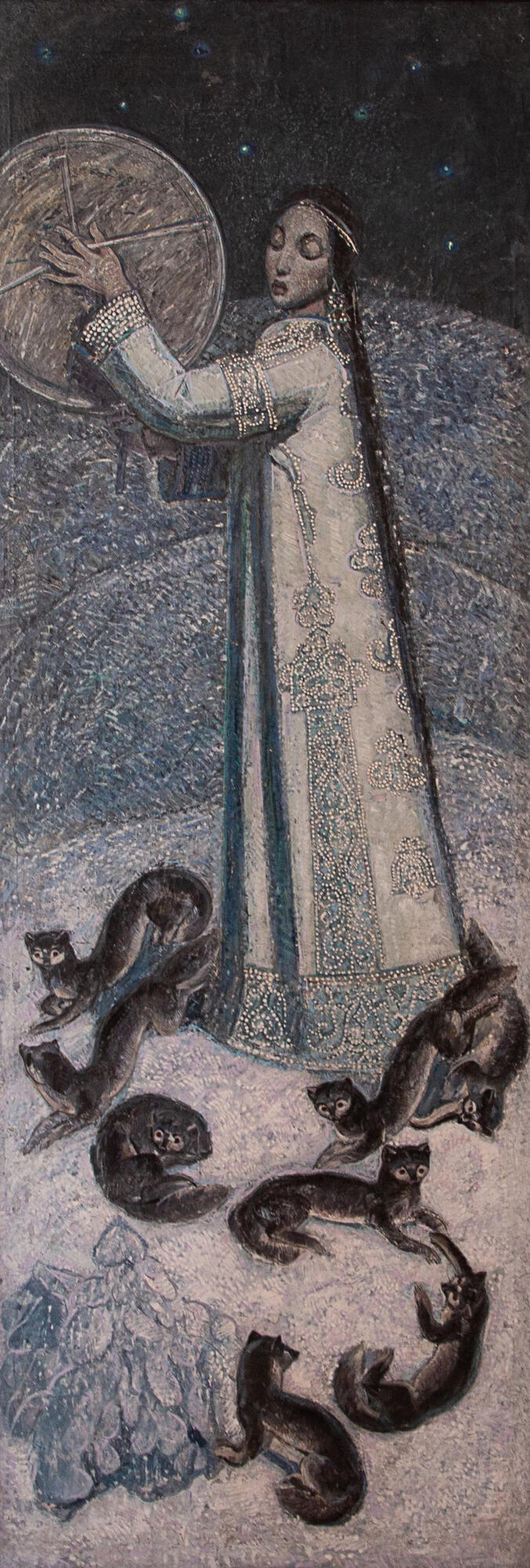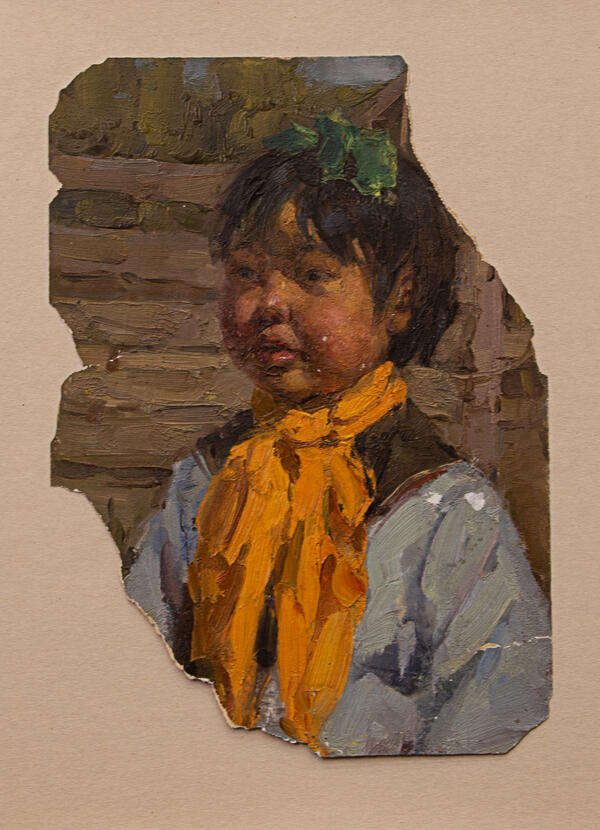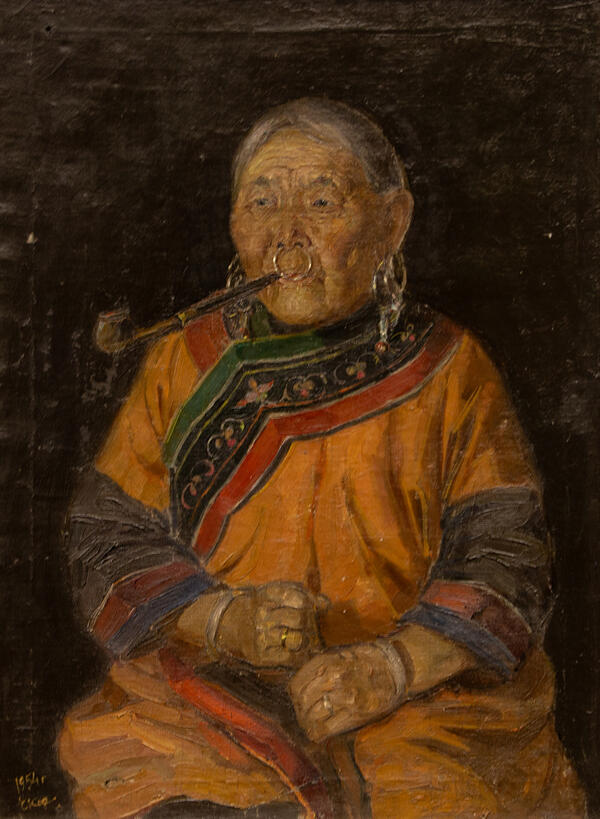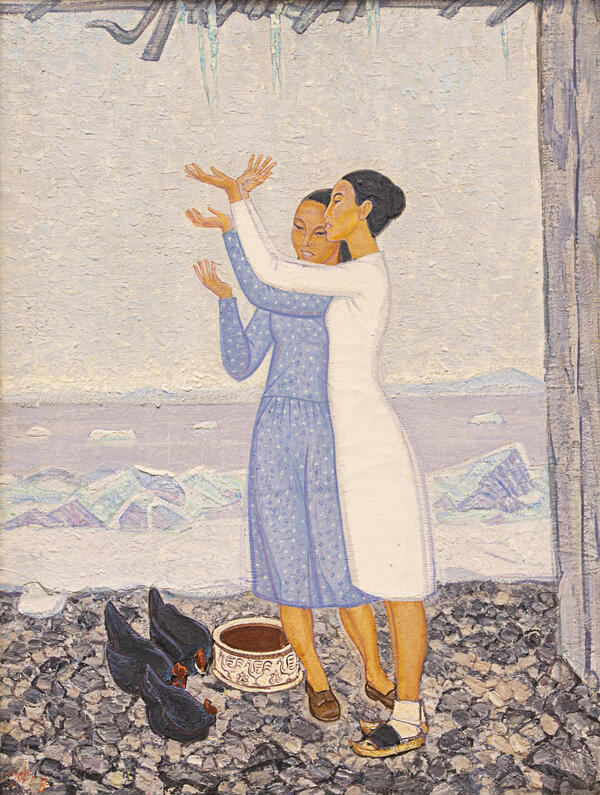The work of Yevgeny Vasilyevich Korolenko is divided into four major cycles: Nanai, tribal, symbolic and Slavic. The Nanai cycle was the first one chronologically and also provided the basis for all the subsequent ones. The artist would repeatedly go back to the themes, images, and philosophical reflections that occurred during those years.
In the Nanai period, Korolenko lived and worked for a long time in the ethnic village of Kondon: he communicated with locals, observed their lifestyle, and documented their stories and legends. One elderly storyteller told him about the legend of the Queen of Silver Sables. Korolenko was captivated by the plot and vivid images and decided to portray what he had heard.
The legend tells a story of a poor young man who fell in love with a young woman from a noble family. The father did not want to give his daughter away to a plain hunter and demanded that he bring him a silver sable within a day. The young man went to the Harpi Valley and found the Queen of Silver Sables (according to another version, he wandered through the forest for a long time and ended up in the right place by accident). She was playing the tambourine, and the red-eyed silver animals were dancing and playing at her feet. The queen listened to the young man’s story and gave him one sable with a warning that it could only stay with a kind person. The next morning, the hunter brought the sable as agreed and received permission to marry his beloved. As for the animal, it vanished as soon as the greedy rich man touched it. After all, dishonest wealth will dwindle.
The figure of the Queen occupies a prominent place in the painting and serves as the leading vertical element of the entire composition. The frolicking animals have divided into groups and seem to be moving to the inaudible beat of a tambourine. Cold shades of blue are intertwined with specks of silver, adding a fairy-tale touch to the painting and resembling the intricate embroidery on the clothes of the indigenous peoples.
A few years later, in 1964, Yevgeny Korolenko completed the Nanai cycle by turning back to the legend and creating a triptych “In the Realm of Silver Sables” using the smalt technique.
A commemorative plaque attached to the frame of the painting indicates that works can come to the museum from various sources, and this work is particularly unique.
In the Nanai period, Korolenko lived and worked for a long time in the ethnic village of Kondon: he communicated with locals, observed their lifestyle, and documented their stories and legends. One elderly storyteller told him about the legend of the Queen of Silver Sables. Korolenko was captivated by the plot and vivid images and decided to portray what he had heard.
The legend tells a story of a poor young man who fell in love with a young woman from a noble family. The father did not want to give his daughter away to a plain hunter and demanded that he bring him a silver sable within a day. The young man went to the Harpi Valley and found the Queen of Silver Sables (according to another version, he wandered through the forest for a long time and ended up in the right place by accident). She was playing the tambourine, and the red-eyed silver animals were dancing and playing at her feet. The queen listened to the young man’s story and gave him one sable with a warning that it could only stay with a kind person. The next morning, the hunter brought the sable as agreed and received permission to marry his beloved. As for the animal, it vanished as soon as the greedy rich man touched it. After all, dishonest wealth will dwindle.
The figure of the Queen occupies a prominent place in the painting and serves as the leading vertical element of the entire composition. The frolicking animals have divided into groups and seem to be moving to the inaudible beat of a tambourine. Cold shades of blue are intertwined with specks of silver, adding a fairy-tale touch to the painting and resembling the intricate embroidery on the clothes of the indigenous peoples.
A few years later, in 1964, Yevgeny Korolenko completed the Nanai cycle by turning back to the legend and creating a triptych “In the Realm of Silver Sables” using the smalt technique.
A commemorative plaque attached to the frame of the painting indicates that works can come to the museum from various sources, and this work is particularly unique.






